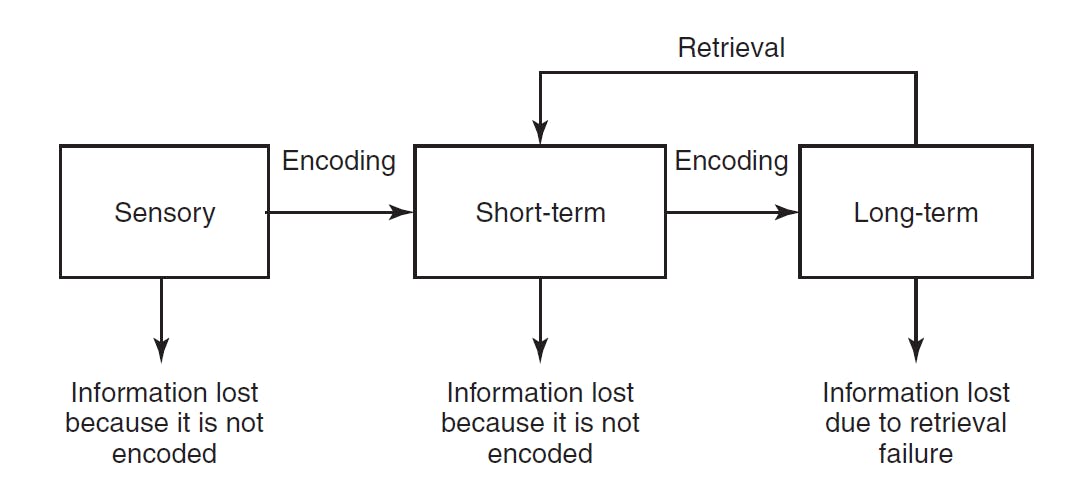AP Psychology Unit 2 Notes: Cognition
January 27, 2025

Jumpstart your test prep with our free AP Psychology study notes. Get an overview of what is covered in this "Cognition" unit along with some of the key terms that are important to know for the exam. These AP Psychology study notes should be used to supplement what you’re learning in your AP Psych class. More study strategies and expert tips can be found in our latest AP Psychology prep book.
[ READ NEXT: AP Psychology Unit 3 Study Notes ]
AP Psychology: Unit 2 Summary
This unit focuses on some of the most important concepts in an introductory psychology class. These concepts are important because they represent a significant number of questions on the AP Psychology test and because concepts covered in this unit can help you study and learn more effectively.
AP Psychology: Unit 2 Key Terms
Below, we describe some of the key terms you should review ahead of the AP Psychology exam.
- Schemata: Our experience creates schemata (also called schema), which are mental representations of how we expect the world to be. Our schemata influence how we perceive the world.
- Monocular depth cues: Depth cues that do not depend on having two eyes.
- Binocular depth cues: Depth cues that depend on having two eyes.
- Algorithm: An algorithm is a rule that guarantees the right solution by using a formula or other foolproof method.
- Heuristic: A heuristic is a rule of thumb—a strategy we can use to make a quick but not necessarily accurate judgment in a situation.
- Working memory & short-term memory: Everything you are thinking at the current moment is held in your short-term memory, and if you are trying to do something with that information, it’s in your working memory. Short-term memories are also temporary. If we do nothing with them, they usually fade in 10 to 30 seconds. Working memory is your ability to manipulate items in your short-term memory.
- Long-term memory: Long-term memory is our permanent storage. As far as we know, the capacity of long-term memory is unlimited.
- Retrieval: The last step in any memory model is retrieval, or getting information out of memory so we can use it. There are two different kinds of retrieval: recognition and recall.
- Constructed memory: A constructed memory (or reconstructed memory) includes false details of a real event or might even be a recollection of an event that never occurred.
- Reliability: Reliability refers to the repeatability or consistency of the test as a means of measurement.
- Validity: Validity is often referred to as the accuracy of a test. A personality test is valid if it truly measures an individual’s personality, and the career inventory described above is valid only if it truly measures for which jobs a person is best suited.
- Intelligence: Although intelligence is a commonly used term, it is an extremely difficult concept to define. Typically, intelligence is defined as the ability to gather and use information in productive ways. However, we will not present any one correct definition of intelligence because nothing that approaches a consensus has been achieved.
- IQ: IQ stands for intelligence quotient. A person’s IQ score on this test is computed by dividing the person’s mental age by his or her chronological age and multiplying by 100.
- Heritability: Heritability is a measure of how much of a trait’s variation is explained by genetic factors. Heritability can range from 0 to 1, where 0 indicates that the environment is totally responsible for differences in the trait and 1 means that all the variation in the trait can be accounted for genetically.
Three-Box/Information-Processing Model
The principal model of memory is the three-box model, also called the information-processing model or the multi-store model. This model proposes the three stages that information passes through before it is stored. External events are first processed by our sensory memory. Then some information is encoded into our short-term (or working) memory. Some of that information is then encoded into long-term memory.

AP Biology Resources
- About the AP Biology Exam
- Top AP Biology Exam Strategies
- Top 5 Study Topics and Tips for the AP Biology Exam
- AP Biology Short Free-Response Questions
- AP Biology Long Free-Response Questions
AP Psychology Resources
- What’s Tested on the AP Psychology Exam?
- Top 5 Study Tips for the AP Psychology Exam
- AP Psychology Key Terms
- Top AP Psychology Exam Multiple-Choice Question Tips
- Top AP Psychology Exam Free Response Questions Tips
- AP Psychology Sample Free Response Question
AP English Language and Composition Resources
- What’s Tested on the AP English Language and Composition Exam?
- Top 5 Tips for the AP English Language and Composition Exam
- Top Reading Techniques for the AP English Language and Composition Exam
- How to Answer the AP English Language and Composition Essay Questions
- AP English Language and Composition Exam Sample Essay Questions
- AP English Language and Composition Exam Multiple-Choice Questions
